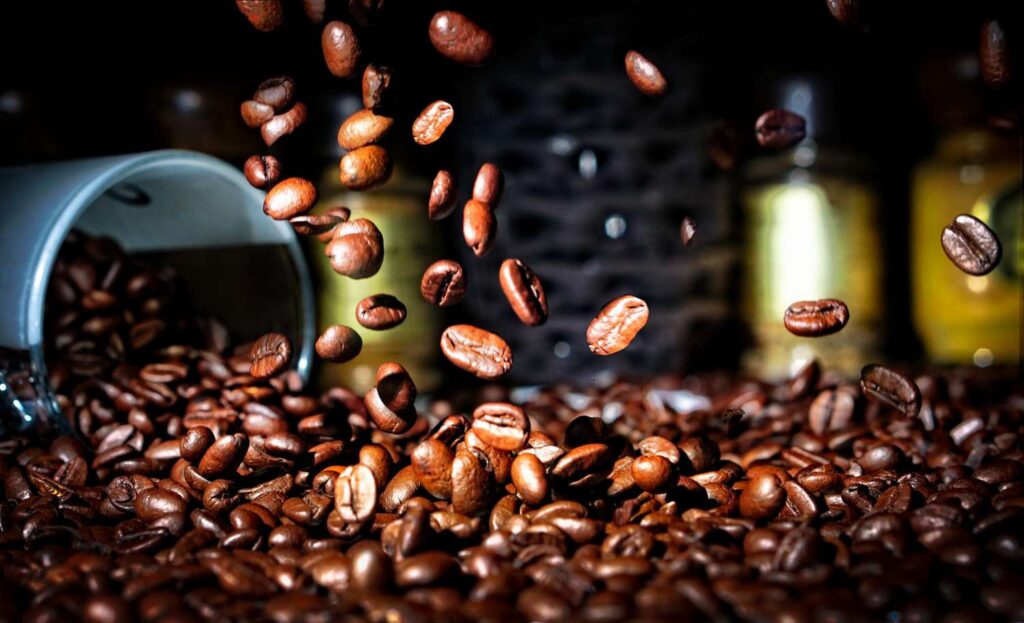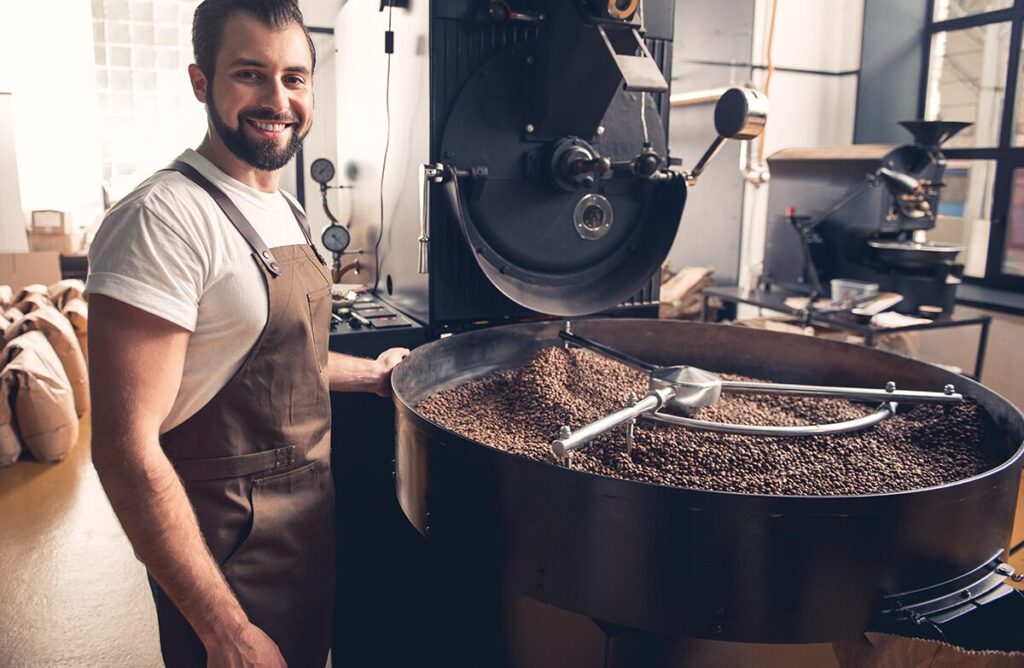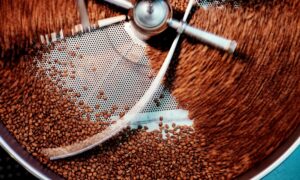Coffee, that beloved elixir of mornings and midday pick-me-ups, has a rich history of preparation methods beyond your usual drip or espresso machine. From the traditional to the avant-garde, coffee lovers worldwide have developed diverse techniques to coax out the nuanced flavors and aromas of coffee beans.
In this comprehensive guide, we’ll delve into the art of cooking beans, exploring classic brewing methods, and venturing into the world of DIY roasting, cold brews, Turkish, cowboy, nitro, bean tea, and even coffee-infused recipes. We’ll also unravel the science behind bean flavors and peek into the future of preparation.
Introduction to Coffee Bean Cooking Techniques

Source: en.wikipedia.org
Before we embark on our caffeinated journey, let’s understand the essence of bean cooking. The process of brewing coffee is akin to alchemy, transforming simple beans into a flavorful and aromatic concoction. Whether you’re a seasoned barista or a casual enthusiast, exploring various techniques can elevate your experience to new heights.
Drip, French Press, Espresso
The classics never go out of style. We’ll start by revisiting familiar territory with classic brewing methods like drip, French press, and espresso, each method bringing its unique characteristics, allowing you to tailor your coffee to your taste preferences. As we uncover the nuances of each method and share tips for mastering the art of these timeless techniques, you’ll be well on your way to creating not only exceptional cups of coffee but also exploring delightful coffee recipes that can elevate your experience to new heights.
Roasting Your Coffee Beans at Home
For those who crave complete control over their flavor profile, home roasting is the ultimate adventure. We’ll guide you through the process of roasting beans at home, exploring various roasting levels and methods to achieve the perfect roast. Say goodbye to store-bought beans and hello to a personalized experience.
Step-by-Step Preparation Guide

Source: allrecipes.com
Cold brew coffee is the embodiment of smooth and refreshing caffeination. To make it at home, begin by coarsely grinding your favorite beans. Then, combine the grounds with cold, filtered water in a large jar or pitcher, using a ratio of roughly 1 cup of coffee to 4 cups of water.
Stir the mixture well, ensuring all the beverages are saturated, and then cover it. Let this concoction steep in the refrigerator for about 12-24 hours, depending on your preferred strength. After steeping, strain the liquid through a fine-mesh sieve or a filter to remove the grounds.
Now, your concentrated cold brew is ready to enjoy. Dilute it to taste with water or milk, add sweeteners or flavors if desired, and serve over ice. Cold mixture beverage is a refreshing and versatile way to savor the mixture’s deep, mellow flavors.
Turkish Coffee: A Rich Cultural Brewing Tradition
Traveling to the heart of beverage culture, we explore the tradition of Turkish brew. Steeped in history and rich in flavor, Turkish mixture is a cultural experience in a cup. Discover the unique preparation method, including the intricacies of brewing, serving, and savoring this aromatic delight.
Cowboy Coffee: Campfire-Style Making

Source: interactcp.com
Step into the rugged world of cowboy brew, where simplicity meets soul-warming flavor. This rustic method harks back to the Old West, with little more than a campfire, a pot, and coarse brew grounds.
To brew cowboy beverages, water, and grounds are boiled together in a pot, allowing the rich brew flavors to meld in the open air. After a gentle simmer, a handful of cold water is tossed in, which miraculously settles the grounds to the bottom. The result? A robust, no-frills mixture that embodies the essence of campfire camaraderie.
Cowboy coffee isn’t just a beverage; it’s a taste of frontier history, perfect for those who crave adventure with their morning cup.
Nitro Coffee: Infusing Beans with Nitrogen Gas
Nitro brew is the mixture world’s bubbling sensation. This intriguing method involves infusing cold-tasting coffee with nitrogen gas, creating a velvety texture and creamy head, much like a stout beer. The result is a visually mesmerizing and texturally indulgent experience.
The nitrogen infusion doesn’t just affect the brew’s appearance; it transforms its taste, too. The tiny nitrogen bubbles enhance the mixture’s sweetness, cut down on acidity, and impart a luxurious mouthfeel. Nitro brew is often served on tap, cascading from the tap like a cascading waterfall, making it an enticing treat for mixture aficionados seeking a delightful departure from the ordinary.
Coffee Bean Tea: A Caffeine-Free Alternative

Source: godairyfree.org
For those seeking rich flavors without the jolt of caffeine, coffee bean tea emerges as an enticing alternative. This soothing beverage is crafted from roasted beans, carefully steeped to extract their aromatic essence while leaving caffeine behind.
bean tea offers a unique taste profile, distinct from traditional coffee. Its flavors are smoother, with subtle nutty and earthy notes that make it a delightful choice for evening relaxation or for those sensitive to caffeine’s effects. It’s not only caffeine-free but also brimming with potential health benefits, thanks to antioxidants and polyphenols present in beans.
Brewing bean tea is a straightforward process, allowing you to customize the strength to your liking. Whether you enjoy it black, with a touch of sweetener, or a splash of milk, this alternative offers a comforting beverage-like experience without the caffeine-induced buzz. So, if you’re looking for a coffee-flavored, caffeine-free companion, give bean tea a try and savor its unique charm.
Recipes and Ideas
Coffee isn’t just for drinking; it can also be a secret ingredient in your culinary creations. We’ll share recipes and ideas that go beyond the cup, from brew-rubbed meats to decadent desserts. Unleash your inner chef and explore the culinary possibilities of beverages.
The Science Behind Bean Flavors
To truly appreciate the art of bean cooking, it helps to understand the science behind flavors. We’ll delve into the factors that influence the taste and aroma of seeds, from terroir and roast level to brewing methods. Gain insights that will empower you to make informed choices.
Exploring Future Trends in Cooking

Source: blackinsomnia.us
The world of coffee is ever-evolving. In our final exploration, we’ll peer into the future of seed cooking. What new techniques, technologies, and trends are on the horizon? From sustainable practices to innovative methods, we’ll speculate on the exciting developments awaiting enthusiasts.
Conclusion
In this journey through the world of bean cooking, you’ll find inspiration to elevate your brew-making skills and expand your appreciation for this versatile beverage. Whether you’re a traditionalist who savors the classics or an adventurous brew connoisseur ready to explore uncharted territory, there’s a bean cooking method for everyone. So, grab your favorite beans, fire up your enthusiasm, and let’s embark on a flavorful adventure through the world of coffee.





